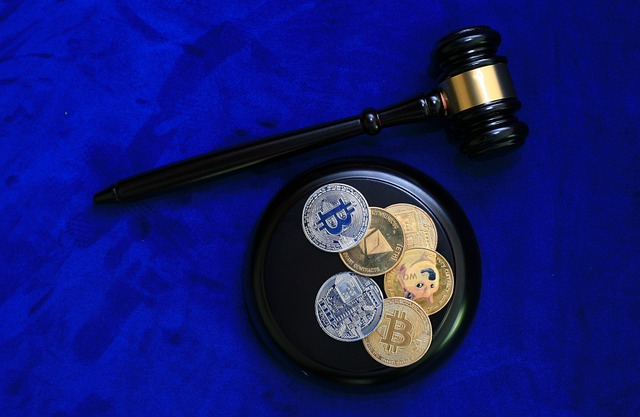How Do I Trade Crypto? A Comprehensive Guide for Beginners
The world of cryptocurrency trading can feel overwhelming, especially to those who are new. With an array of coins, exchanges, and trading strategies, it's easy to get lost in the mix. However, by following a structured approach and understanding the fundamentals, anyone can get started. In this article, I'll walk you through everything you need to know about trading cryptocurrency, along with my personal opinions and insights.

Understanding Cryptocurrency: What You Need to Know
Before diving into the mechanics of trading, it's crucial to grasp what cryptocurrency is. At its core, cryptocurrency is a form of digital or virtual currency that utilizes cryptography for security. This makes cryptocurrencies decentralized and hard to counterfeit. One of the most revolutionary aspects of crypto is that it operates on a technology called blockchain, which functions as a public ledger of all transactions.
The Basics: Key Terms
To trade effectively, you need to be fluent in the terminology. Here are some key terms to familiarize yourself with:
- Altcoin: Any cryptocurrency other than Bitcoin.
- Fiat: Traditional government-issued currency (like the USD or EUR).
- Exchange: A platform where you can buy, sell, or trade cryptocurrencies.
- Wallet: A digital tool used to store, send, and receive cryptocurrencies.
- Market Cap: The total market value of a cryptocurrency.
- Liquidity: The ease with which an asset can be bought or sold in the market.
Choosing the Right Exchange
The first step in your trading journey is selecting a cryptocurrency exchange. There are numerous exchanges available, each with its pros and cons. Here are some factors I suggest considering:
Reputation and Reliability
Always choose an exchange with a solid reputation. Research online reviews and consider how long the exchange has been in business. A reliable exchange not only ensures security but also builds trust in the crypto transactions you're conducting.
Fees
Different exchanges have varying fee structures. Some may charge trading fees, while others might charge for withdrawals or deposits. These fees can affect how much profit you make, so it's essential to choose an exchange with a fee structure that works for you.
User Experience
A user-friendly interface can significantly enhance your trading experience. If you're just starting, consider platforms that offer both mobile and desktop versions and are easy to navigate.
Setting Up Your Account
Once you’ve chosen an exchange, the next step is setting up your account. This process typically involves:
Verification
Most exchanges require some form of identity verification to comply with regulations. This could involve submitting a form of identification and proving your address. While it may feel tedious, this step is crucial for security and helps prevent fraud.
Integrating a Wallet
After your account is verified, consider integrating a crypto wallet. While exchanges offer custodial wallets, it’s safer to use non-custodial wallets where you control the private keys. This reduces the risk of losing your funds in case of an exchange hack.

Making Your First Trade
Now that your account is set up, it’s time to make your first trade. I recommend starting small. Here’s how to execute your first trade:
Choose Your Trading Pair
Once in the trading interface, you'll need to choose a trading pair (e.g., BTC/USD or ETH/BTC). This selection represents the two currencies you are trading between. For beginners, I recommend starting with established pairs like Bitcoin with fiat currencies.
Placing an Order
There are typically two types of orders you can place:
- Market Order: Buying or selling immediately at the current market price. This is straightforward and ideal for beginners.
- Limit Order: Setting a specific price at which you want to buy or sell. This method can offer better control over your trades, but it may take longer to fill if the market doesn’t reach your price.
Finalizing Your Trade
Once you’ve placed your order, keep an eye on the market. After your order is filled, you can review your transaction history. It’s wise to develop a strategy for when to sell your investments as they increase or decrease in value.
Risk Management and Strategies
Trading crypto is not just about buying low and selling high; effective risk management is essential. Here are some strategies and tips that I find valuable:
Diversification
Do not put all your eggs in one basket. Diversifying your investments across various cryptocurrencies can help mitigate risks. This approach allows you to protect your portfolio against significant losses if one asset underperforms.
Setting Stop-Loss Orders
Consider using stop-loss orders to minimize potential losses. A stop-loss order automatically sells your cryptocurrency when it reaches a certain price, helping to prevent further losses in a declining market.
Continuous Learning
The cryptocurrency market is continuously evolving, with new trends, tools, and strategies emerging frequently. To stay ahead, I recommend following credible sources, participating in forums, and experimenting with small trades to build your experience.
The Emotional Aspect of Trading
Trading can invoke a rollercoaster of emotions—excitement, fear, panic, and greed. I’ve found that maintaining a level head during trading, being disciplined, and sticking to your strategies is as crucial as understanding the market. Overreacting to market swings can lead to poor decision-making and potentially devastating losses.
Keep a Journal
One of the best practices I recommend is keeping a trading journal. Document your trades, the reasoning behind each decision, and the outcome. This will help you analyze your mistakes and successes over time, allowing you to refine your approach.

Conclusion: Your Crypto Trading Journey Begins!
Trading cryptocurrency can be a rewarding endeavor, both intellectually and financially. By educating yourself about the market, starting with careful planning, implementing effective strategies, and managing risks, you can pave the way for success. Remember that everyone was a beginner once—learn from others, adapt your strategies, and most importantly, never stop learning.
As you embark on this journey, trust your instincts, and never invest more than you can afford to lose. Happy trading!